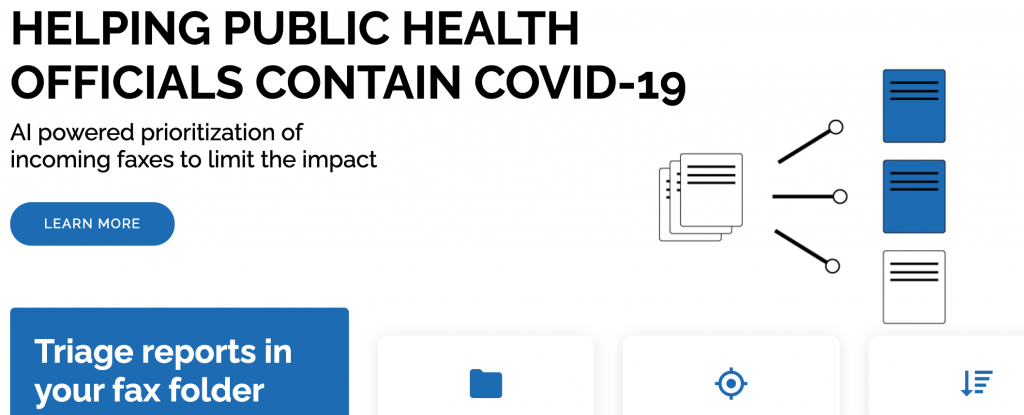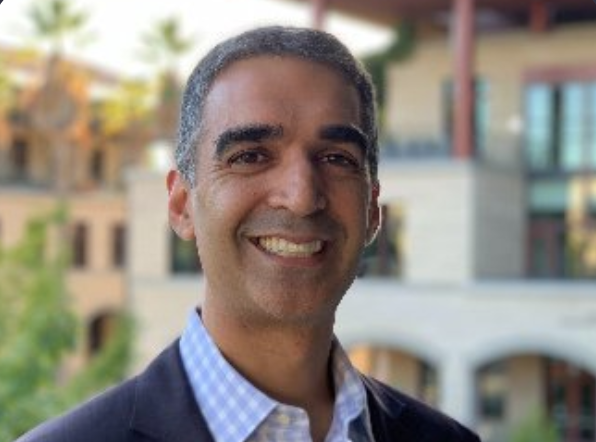
An image from the homepage of Covid Fast Fax, which is available free to medical providers.
Stanford Researchers Release AI-Based Covid Fast Fax for Medical Providers to Speed Results
It may seem like a strange use of AI, but researchers at Stanford University developed a machine-learning algorithm to read hundreds, or even thousands of electronic and physical faxes daily for health care providers so that workers wouldn’t have to comb through them to find critical information. They have released their code and methodology for Covid Fast Fax, so other researchers or health departments can use it for free.

Amit Kaushal, the lead developer of Covid Fast Fax, is an Adjunct Professor at Stanford University in Bioengineering and a doctor of Internal Medicine at the VA in Palo Alto.
In the time of the pandemic, when doctor’s offices, hospitals and medical centers are still reliant on a 1970s-era technology that was upgraded in the 1980s and mostly replaced in business offices by the 21st Century, the idea to speed up the process of sorting through faxes may seem the most ironic development in the battle to fight COVID-19, but it’s seen as “vital” by some health departments.
According to a wired.com story, labs and health providers report new cases to local health departments for contact tracing or to make sure enough medical resources are available at care homes or for infected health care workers. The deluge of faxes takes hours to sort through.
“Like much else about U.S. pandemic response, the project highlights the creakiness of the country’s health system,” the Wired story says. “It’s also another example of creative minds patching it up with hasty innovation, after skilled auto workers made face shields, or homemade hand sanitizer. In 2020, such projects can be lifesavers.”
Amit Kaushal, a Stanford professor and practicing physician who works on integrating machine learning into health care, offered to work on solving the problem of scanning faxes when he learned that Contra Costa Health Services was overwhelmed with faxes, half of which were electronic and the other half physical. Kaushal collaborated on a grant he’d received to work on curbing the virus’s spread with a contact-tracing app using Bluetooth signals and created an “AI-enhanced fax line.”
“Faxes appear as PDFs on a server, not piles of paper—this is after all the 21st century. But it’s tricky to spot and assess a Covid-19 case at a glance. Cases can be reported on several different forms, which are also used for other diseases, are often scrawled by hand not typed, and sometimes arrive in a jumble of other messages or records. On a usual day, two public health specialists would be assigned to read through and prioritize incoming faxes.”
The machine-learning software analyzes images and categorizes them as COVID related. The software could be useful for other healthcare-related applications, too.
“Despite billions spent by the federal government to encourage health providers to process more data electronically, moving medical info between institutions still often falls back to fax. Incentives for digitizing have been mostly aimed at hospitals and doctors, not the public health departments and long-term care facilities now on the Covid-19 front lines.”
read more at wired.com







Leave A Comment